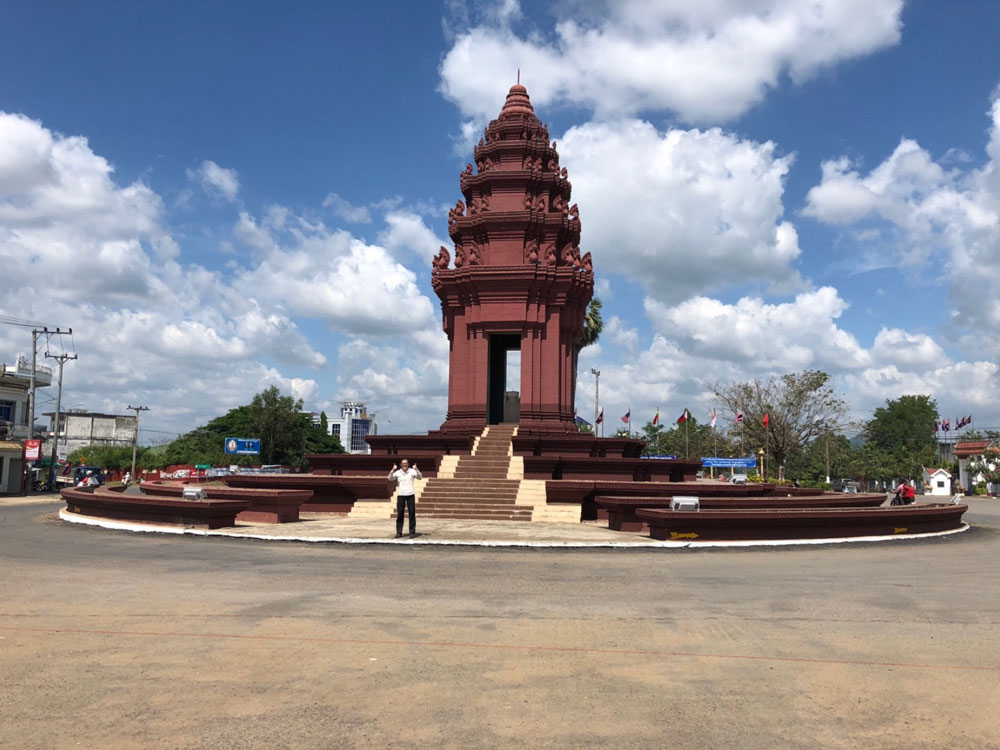

Exploring New Practices for Cambodia’s Cassava Growers
December 12, 2018
As part of our efforts to support and encourage young Australians in study, careers and volunteering in international agricultural research, the Crawford Fund State Committees proudly support our International Agricultural Student Awards. The 2018 recipients of these Awards were announced in May, and we look forward to sharing the journey of these 22 dynamic Australian tertiary students as they gain international agricultural research experience and expertise.
Throughout 2018 and the early part of 2019, the successful Award recipients will travel to their host countries to research and explore their chosen topic areas. You can follow their progress here on the Crawford Fund website and read more about their findings, learnings and any challenges they encounter.
To-date we have featured the experiences of University of Western Australia student, Christian Berger; Queensland University of Technology PhD candidate, Thomas Noble; University of Melbourne student, Kimberly Pellosis; Luisa Olmo from the University of Sydney; Rachael Wood from Charles Sturt University; University of Melbourne student Ziyang Loh and most recently Lucinda Dunn from the University of Sydney.
Now, thanks to The Crawford Fund NSW Committee, we deliver this summary of University of New England student Jessica Fearnley’s experience with an ACIAR project in Cambodia.

As part of her Crawford Fund Student Travel Award Jessica Fearnley travelled to Cambodia to be involved in the ACIAR project Uptake of agricultural technologies and best practices amongst farmers in Battambang and Pailin provinces, Cambodia overseen by Dr Stephanie Montgomery. The project aims to study why farmers make decisions, identify connections between needs and technologies as well as test extension and option using partnerships and demonstrations.
The project is carried out on two trial sites; one nestled in the mountains of Pailin, just off the Thailand border and one in the scenic valley of Samlout.
“My work involved looking at local orchards across this area for insect and disease pressures. I also investigated the incidence of mosaic virus in cassava to determine how widespread the disease had become in Cambodian crops,” said Jessica.
Cassava is used as a staple feedstock for animals in Cambodia, providing a steady income for families. It is extensively cultivated as an annual crop for its edible starchy tuberous root, but because of the growing and harvesting methods used, continuous production of cassava can lead to soil nutrient depletion, and on sloping land, cassava cultivation can also cause severe erosion if the crop is not managed correctly.
“Soils in the Battambang and Pailin provinces are well structured, very rich in nutrients and highly fertile, but the continued use of cassava in these areas will deplete this natural resource,” said Jessica.
“Current research is looking into the transition of cassava crops into orchards for an increased preservation of the soil in these areas. However, only in the last few years have researchers looked into the type of insect pressures and diseases that may be experienced in these areas if the transition is made.”

“I scouted around 20 orchards in my three weeks in Cambodia, where I was able to collect samples to help identify insects and benchmark pressures around the area, including the various fungal and bacterial diseases that were prominent across the orchards, and collate the results,” she said.
“Many of the challenges I faced were common for international researchers – lack of resources and access to equipment, and for the growers and researchers, lack of mechanisation and access to insecticides and fungicides,” said Jessica.
“My personal challenges included acclimatising to the humid conditions with a heightened sensitivity due to malaria medication, and my limited Khmer made it difficult to explain what I was doing in a local’s orchard with my clipboard and blue insect net, but I quickly had a routine to show them I meant no harm to their fruit – it helped that Khmer people are also very friendly.”
“I was very lucky to not only expand my knowledge of agricultural systems and learn new farming practices, but I was able to immerse myself in the Cambodian culture, being away from the usual touristy areas of Siem Reap and Phnom Phen. I even got to experience a traditional cooking class at Nary’s Kitchen and practice my peak hour bike riding skills. I want to thank the Crawford Fund for giving me this opportunity to participate in this program, it has given me a once in a lifetime opportunity,” she concluded.




 0
0